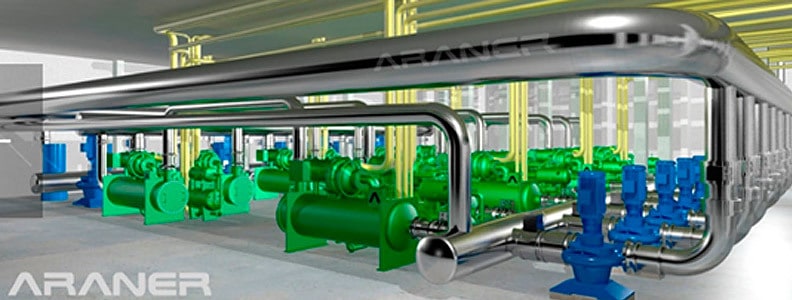We are in the middle of an energy crisis. After decades of unprecedented development in all corners of the globe, the energy demands are now extremely high. Economic development and population growth are the main drivers of this demand. The future of energy consumption is dependent on a number of factors, including fossil fuel price and availability of energy alternatives. Interestingly, 50% of global energy demand will go into power generation by 2030. It is statistics such as these that have compelled district cooling plant operators and owners to implement energy efficiency measures. Which is the utmost solution? We are sure: Thermal energy storage (TES) applied to district cooling plants.
HOW IMPORTANT IS TES FOR DISTRICT COOLING PLANTS?
Thermal energy storage is crucial for district cooling as it allows average load based sizing of chillers as opposed to peak load sizing. This reduces the operating costs of chillers significantly considering that off-peak power rates are normally low.
SIZING THE SYSTEM
Remember that when sizing a thermal energy storage system, one requires a set of information:
- Cooling loads
- Plant details
- Operating patterns and temperatures

Fig 1: Inside a District Cooling Plant
When it comes to system design, we are looking at a number of approaches. First , you could base the tank capacity on size of cooling plant. A system may also be designed using the minimum operating time for the plant. This approach is mostly applicable where equipment cycling is undesirable. In yet another option, you could design your thermal energy storage system so that it meets the cooling demand of the smallest zone within the district. This is essentially the most critical zone i.e. the zone that needs cooling the most.
ISSUES TO CONSIDER
A TES system for district cooling doesn’t work without issues. It is important to have these issues in mind at the design stage. The thermal energy storage system must be safe and energy efficient, but also controllable. Even more important is to avoid either over-sizing or under-sizing. An under-sized TES tank doesn’t store sufficient cooling from the plant, hence it is inefficient. Moreover, such a tank is incapable of supplementing the chiller plant output during times of peak cooling demand. Similarly, an over-sized tank will present challenges. The location of inlet and outlet points of the chilled water TES tank is crucial as it affects mixing effectiveness. The design should be such that the return water is warmer and enters the tank at the top. Sensors are essential in the system as they determine when to switch on and switch off the cooling source depending on temperature in the district. Plant modulation control is possible if these sensors are placed at intermediate levels. There are so many other issues to consider as you will discover.








